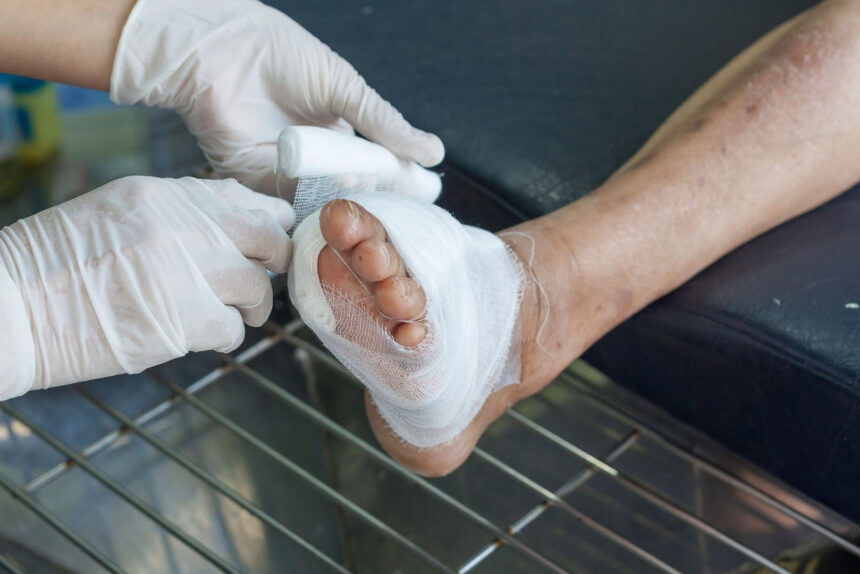Diabetic wound care involves a series of specialized treatments for non-healing sores, often found on the lower limbs. For individuals with diabetes, minor cuts or blisters pose a greater risk of developing into serious infections. These infections may progress and lead to the need for amputation if not managed properly. Here are some ways to help prevent amputation in diabetic patients:
Control Blood Sugar
Managing your blood glucose levels forms the basis of diabetic care and supports overall wellness. When blood sugar remains high over an extended period, wounds may take longer to heal, and the body’s immune response grows weaker. Nerve damage as a result of uncontrolled glucose can cause sensations in the feet to dull. This puts patients at higher risk of unnoticed injuries. Small matters, such as stepping on a sharp object or sustaining a blister, may become significant issues if wounds go unnoticed.
Practical daily steps include tracking blood glucose, sticking to a meal plan, and being consistent with prescribed medications. Engaging in regular physical activity also plays a part in better glucose management. Individual recommendations may vary, but the core strategies focus on building stable glucose levels.
Use Compression Therapy
Compression therapy is a supportive technique that uses pressure garments, such as stockings, bandages, or wraps, to assist blood flow in the legs. Good circulation supplies tissue with oxygen and nutrients, which are necessary for wound healing. For people with diabetes, swelling in the lower extremities is common, and compression therapy helps move fluid out of the legs. Compression stockings are available in various pressure levels and sizes, and a healthcare provider will guide you in finding the right fit. These garments are worn during the day and removed at night, or as directed. Adhering to a routine helps prevent new injuries, minimize swelling, and support the healing environment.
Schedule Debridement
Debridement is a focused medical procedure that removes dead, damaged, or infected tissue from a wound site. This encourages the growth of new, healthy tissue and helps limit the spread of infection. The process may be repeated at intervals depending on the progress of wound healing. Forms of debridement vary, and can include:
- Sharp: Using instruments like scalpels
- Mechanical: Using dressings or water therapy
- Enzymatic: Using topical applications
- Autolytic: Using moisture-retentive dressings for the body’s own enzymes to work
After the procedure, new dressings are placed, and regular follow-up care is scheduled. Daily self-checks for redness, swelling, or drainage support your recovery and help you notice any changes promptly. Timely debridement is a practical step in diabetic wound care plans for reducing complications.
Get a Skin Graft
Skin grafting is sometimes used for wounds that have not closed with standard wound care or when tissue loss is extensive. Healthcare providers may take healthy skin from another area, often the thigh or upper arm, and transplant it onto the wound bed. The donor site should heal naturally, while the graft is checked for signs of acceptance and healing. A new skin layer over the open wound helps reduce the risk of infection and provides a better structure for the wound site’s closure. The healing timeline after a skin graft is unique to each person. Daily monitoring for color changes, drainage, or unfamiliar pain is recommended, as prompt reporting supports safe recovery.
Prioritize Diabetic Wound Care
Taking a proactive approach to health means making wound care part of your daily routine. Regularly inspecting your feet and lower legs, paying attention to skin color, temperature, and any break in the skin, is a practical step. Catching new sores or small blisters early may avoid further complications. When problems arise, seeking advice from your healthcare team allows for timely interventions. If you have a non-healing wound, arrange a consultation with a wound care professional to explore your options today.




